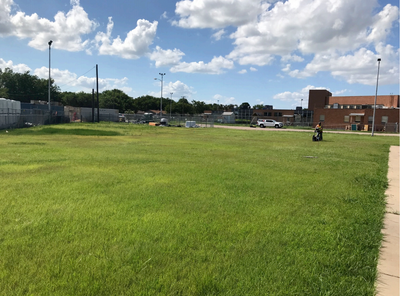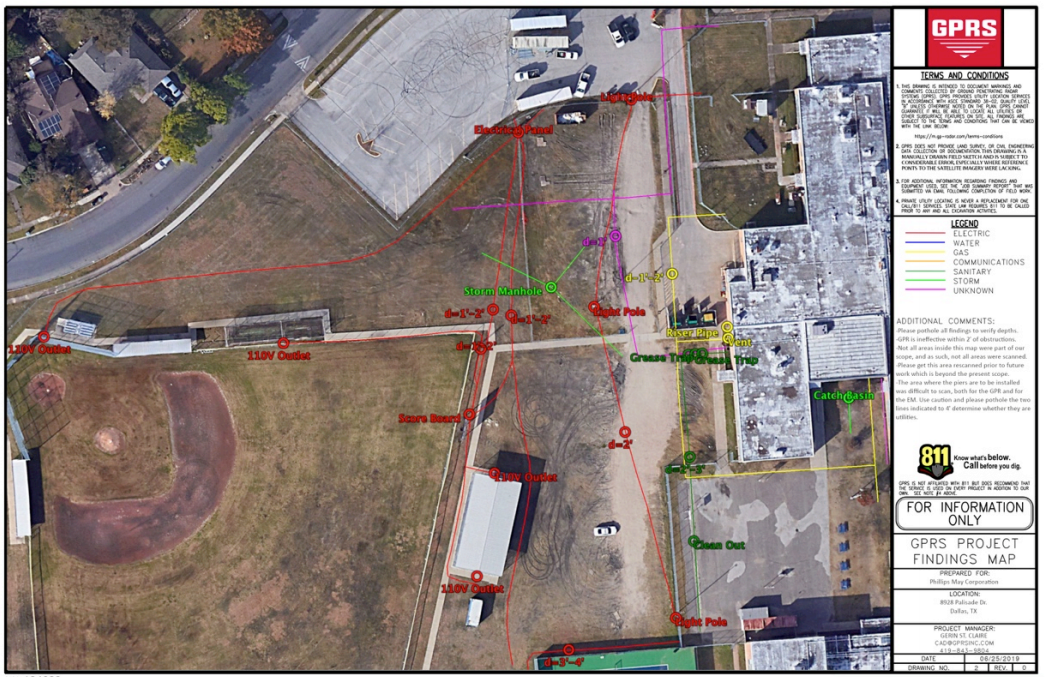
GPRS Locates Utilities in Texas
We were recently asked to locate utilities in an area that had previously been located. The customer was aware of a few utilities, and plans showed their basic layout, but their exact locations and depths were needed. Based upon the customers understanding that not many utilities were to be found within the scan area, we scheduled the work for two hours of scanning.
Previously undetected utilities located as we began to scan, we started by locating all of the known utilities, which had previously been found, but whose markings faded beyond recognition. But we did not stop there, we continued locating and found at least 4 utilities that the previous locator had missed. Finding these utilities required more time than we had planned for the job, but we honored our original price and delivered a better locate than the customer was expecting. He asked for a business card and inquired about how he could send along positive feedback.
Experience Matters How is it possible that some locators can find utilities that others cannot? First, it must be said that not all utilities can be located. Full stop. Some utilities simply lie beyond the reach of the current technology. Other utilities are easy to find, and indeed may be very hard to miss. Between those two extremes there lies a grey area--utilities which are at the edges of what the current technology can locate. Those utilities are the reason that not all GPR companies are equal, and why it is
worth it to bring in a qualified technician who meets SIM certification standards. Some utilities emit only a feint reaction that can easily be missed. Other utilities might be located only by someone who knows tricks specific to the type of utility. An experienced technician will know to isolate and tone utilities separately, so that the path of least resistance is not the only path that is found. An experienced technician will know how to sift through the noise to find the signal.
Finding Ghost Signals In the locate that we completed above, we found a line that had previously gone undetected by noticing a ghost signal. When we induce a tone onto a known line, that signal will travel along the line and allow the line to be located. That signal will also jump (bleed) onto other lines and will eventually make its way back to the point of origin. Sometimes, inducing a tone onto one line will cause ghost readings on another separate line. These feint readings are often easy to miss, because the line in question may only be picking up a small trace of the actual tone. In this locate, we saw a feint hint of a signal in an unexpected location. We proceeded to induce a new tone onto that location and found that we could follow the line through multiple twists and turns.
GPS Mapping In addition to the actual locate, our customer requested a GPS map, which not only preserves a record of what was located, but also provides an attractive deliverable for the property owner. The map below is what we produced, using a GPS device.
When you need your next locate, remember to ask if the technician is SIM certified, or call GPRS at 214-218-8574. At GPRS, all team members are SIM certified and ready to find answers.

